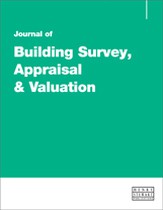Modelling building attributable risks from the built year: Results from Scottish Housing Condition Survey, 2009
Abstract
Housing conditions have a continuous impact on occupants. However, the source of the housing problems, in addition to the use of chemicals in relation to occupant health, is less understood. Therefore, this paper aims to study the relationship of indoor architectural engineering characteristics and housing built year in a country-wide and building-based setting. Data was analysed through the Scottish House Condition Survey, 2009 (n=4,298). This is, to date, the largest single housing research project in Scotland and the only national survey with a random sampling method to look at the physical condition of homes in Scotland and the living experience of occupants. Statistical analysis included chi-square test, logistic regression modelling and mathematical attributable risk estimation. Only 750 buildings (21.7 per cent) were built within 30 years (post 1982). Other older housing tended to have more condensation, mould, damp, disrepair, energy inefficiency, fails on safety and security, and unsatisfactory heating in the bathroom and kitchen. The greatest odds were observed in buildings that were built pre-1919. Unfit architectural engineering characteristics were identified in 21.4 per cent to 92.3 per cent of old housing, built 30 years ago (before 1982). Long-standing health problems caused by a variety of architectural features in old housing could be prevented if old housing stock was to be regenerated or renovated.
The full article is available to subscribers to the journal.
Citation
Shiue, Ivy and Bearman, Nick (2015, July 1). Modelling building attributable risks from the built year: Results from Scottish Housing Condition Survey, 2009. In the Journal of Building Survey, Appraisal & Valuation, Volume 4, Issue 1. https://doi.org/10.69554/KTLM1828.Publications LLP
